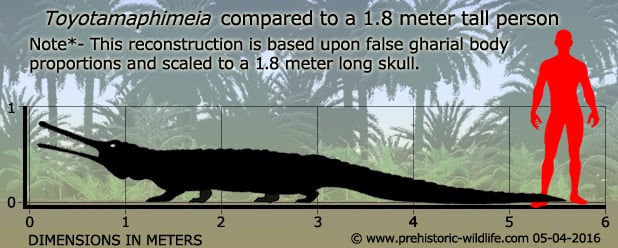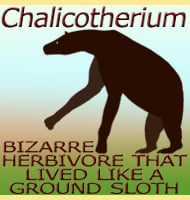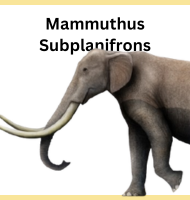In Depth
Toyotamaphimeia was originally described as a prehistoric species of the Tomistoma genus, better known as the false gharial. Today the false gharial is known to attain lengths of up to five meters in the wild, with isolated skulls suggesting a theoretical limit of somewhere between five and a half and six meters long. Toyotamaphimeia seems to have been comparable in size to modern false gharials, and would have been one of the most dangerous animals in the Pleistocene waters of Japan.
Further Reading
- A New Generic Allocation of Tomistoma machikanense, a Fossil Crocodilian from the Pleistocene of Japan. - Copeia 1983(1):89-95. - R. Aoki - 1983. – Paleopathology of Toyotamaphimeia machikanensis (Diapsida, Crocodylia) from the Middle Pleistocene of Central Japan. – Historical Biology. 16 (2–4): 93–97. – Yoshihiro Katsura – 2004. – Toyotamaphimeia cf. machikanensis (Crocodylia, Tomistominae) from the Middle Pleistocene of Osaka, Japan, and crocodylian survivorship through the Pliocene-Pleistocene climatic oscillations. – Palaeogeography, Palaeoclimatology, Palaeoecology. 496: 346–360. – Masaya Iijima, Arata Momohara, Yoshitsugu Kobayashi, Shoji Hayashi, Tadahiro Ikeda, Hiroyuki Taruno, Katsunori Watanabe, Masahiro Tanimoto & Sora Furui – 2018.










